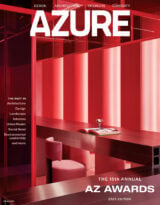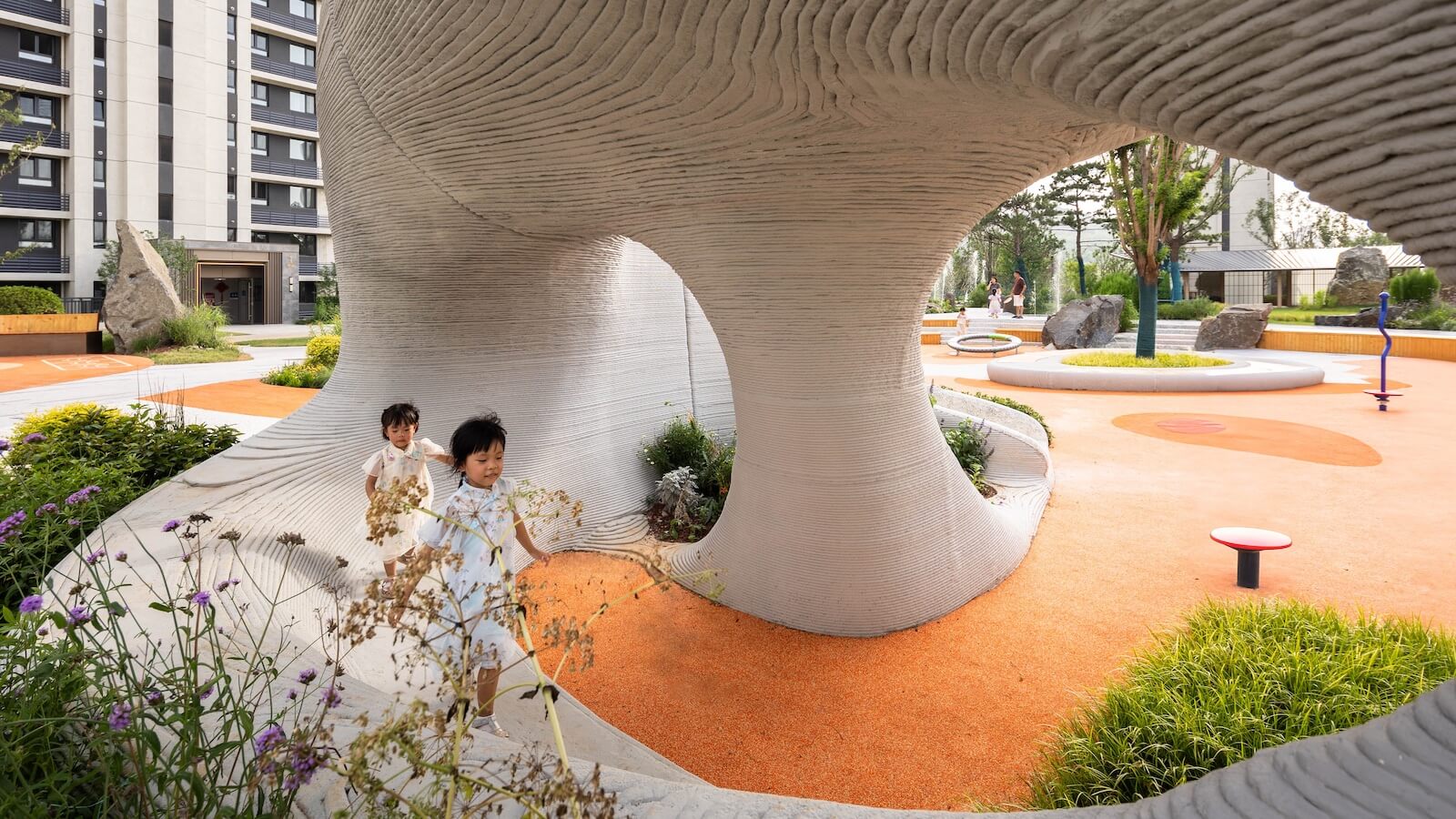
As its name suggests, Jinan City’s 13,000-square-metre Boulder Park embodies an elemental quality. Anchored by a cluster of large stone boulders alongside a sandpit and a water installation, the new playground resembles a natural rock formation from afar. But up close, the striated layers of 3D-printed concrete come into focus, with slides, stairs, seating areas and pockets of greenery — not to mention a dramatic cave — carved into the synthetic stone.
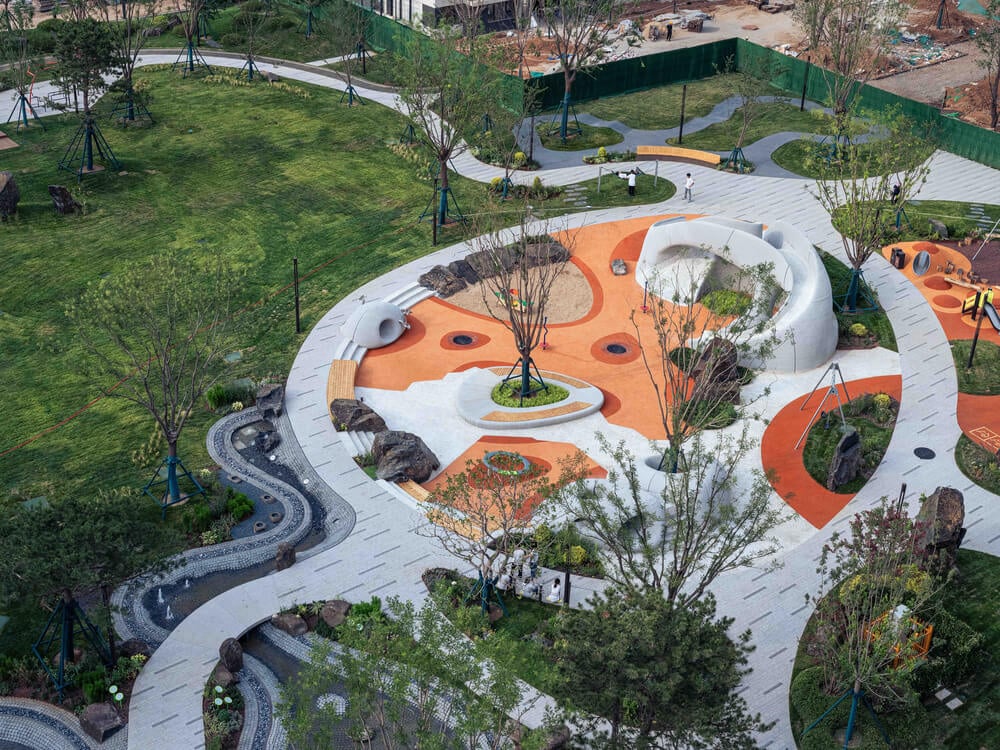
Designed by Shanghai-based landscape specialists XISUI, the 4,000-square-metre playscape at the heart of the new urban park is an instant and intuitive destination. Inviting a wide range of activities for children of all ages, the playground invites exploration through a wide range of environments.
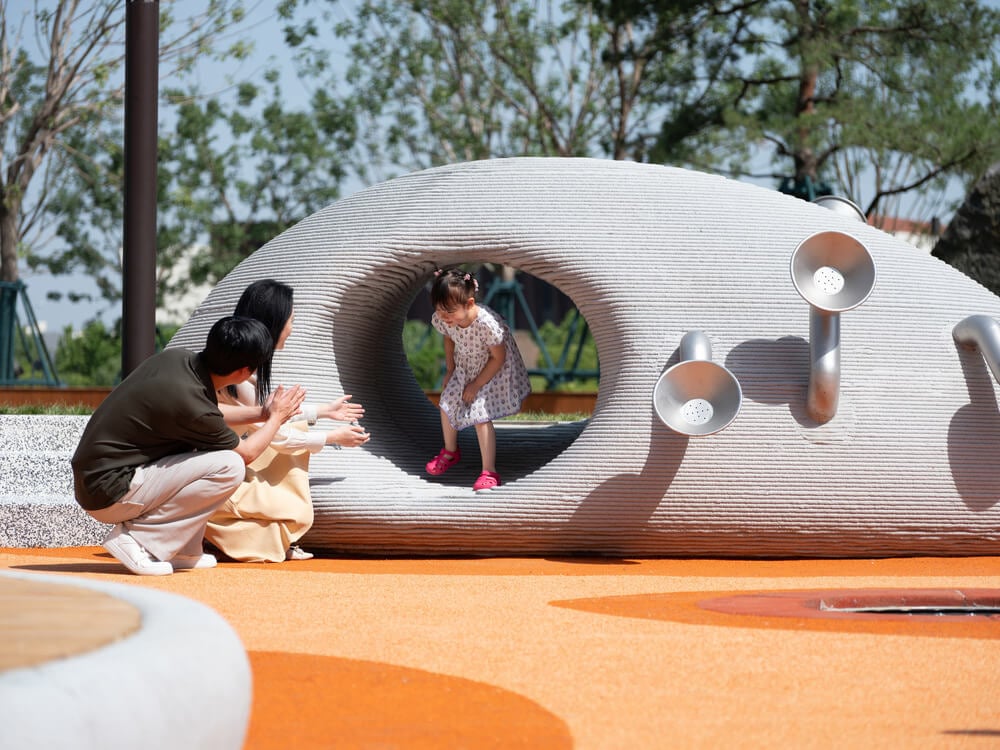
For smaller children, a toddler tunnel is kitted out with speaking tubes, while slides and crawl-throughs also welcome young adventurers. Meanwhile, the taller “boulders” are outfitted with subtle surface curves to create steps, handrails, slides, and seating elements, as well as shaded rest spaces within the cave-like environs.
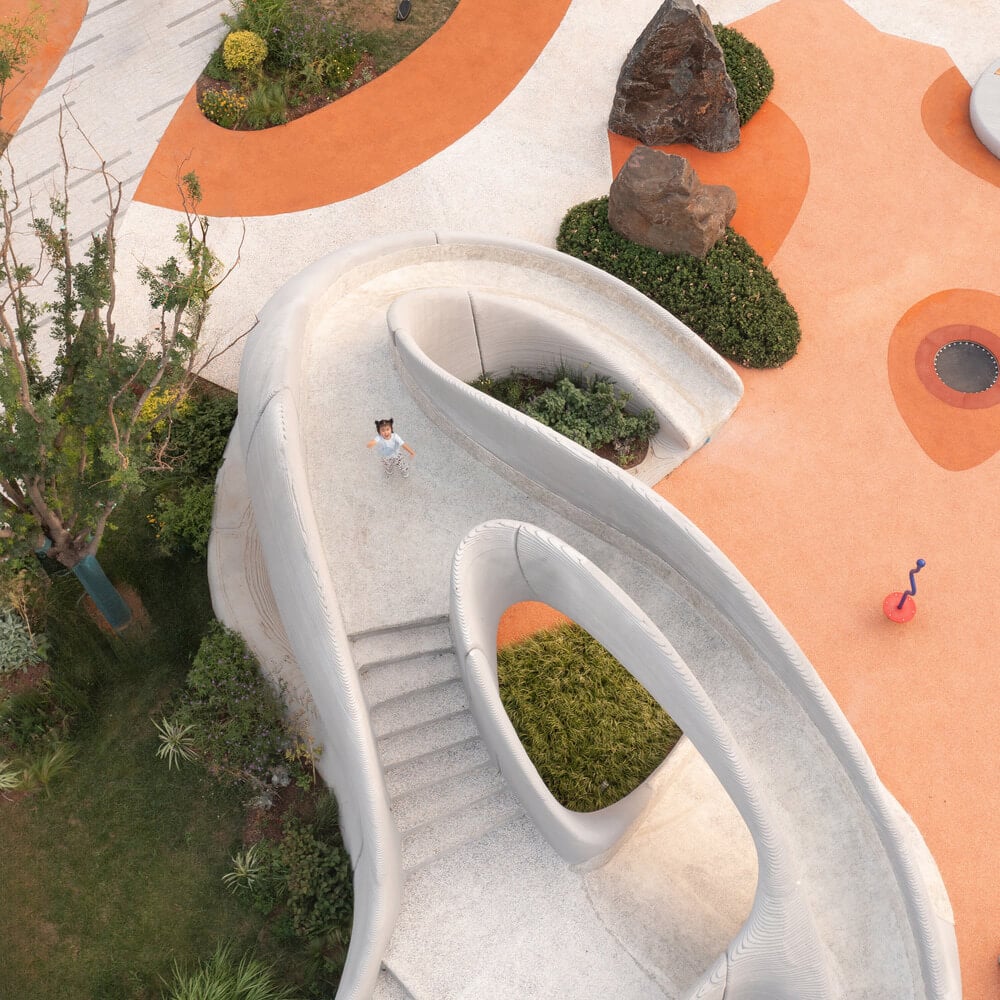
To ensure safety, the edges of every surface are rounded with smooth edges, eliminating the sharper points most likely to cause injury. The 3D concrete printing system at Boulder Park utilized a computer-controlled robotic arm that precisely extrudes liquid or semi-solid concrete, which then solidifies, building the rounded structure layer by layer with exceptional precision — and aesthetic freedom.

Alongside the boulders themselves, the space also incorporates a variety of play structures, from a seesaw and trampoline to rocking horses, merry-go-rounds and climbing ropes, with the more traditional play structures also artfully integrated into a 3D-printed boulder landscape.
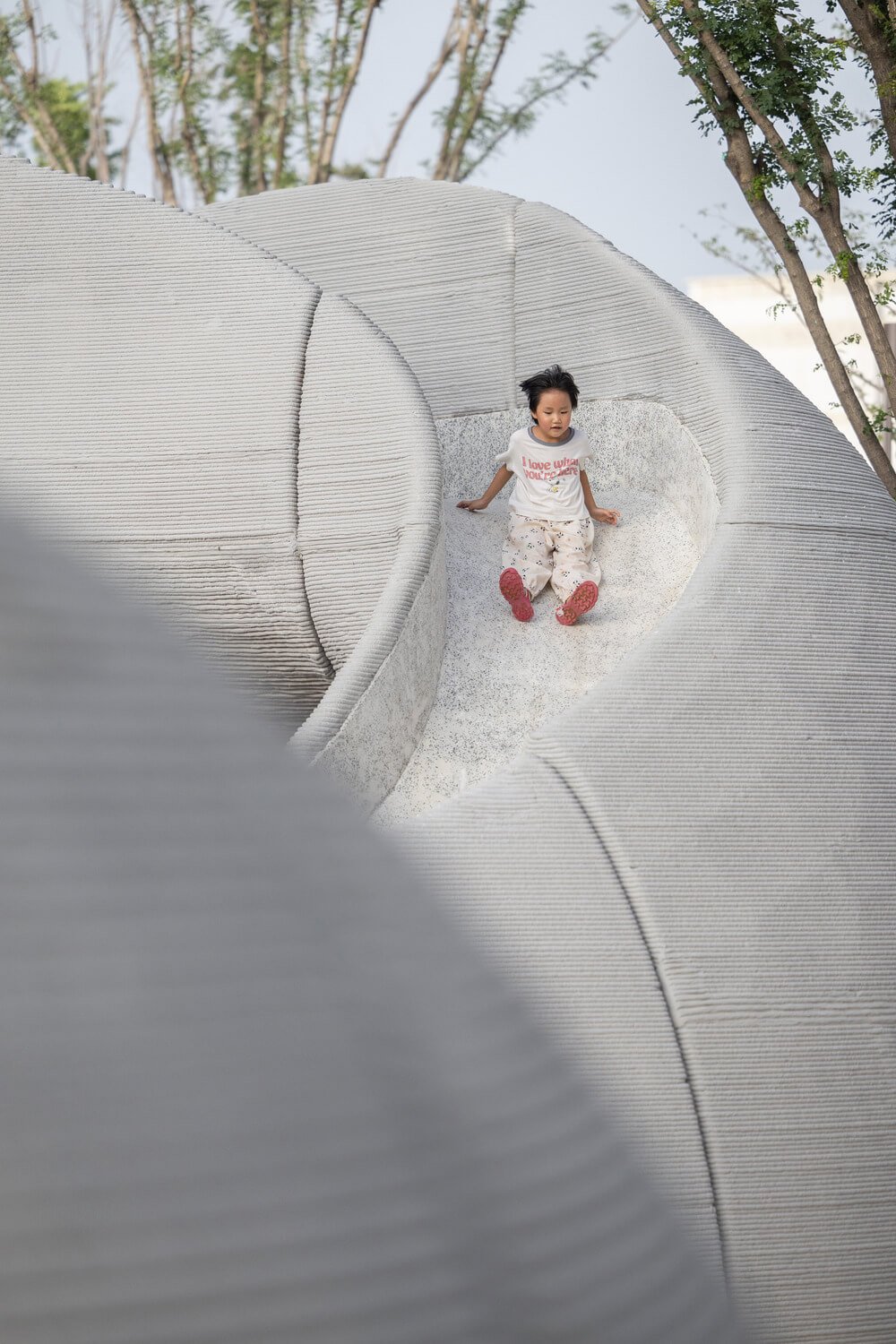
According to XISUI Design’s Hu Yihao, Boulder Park offers a promising global precedent for landscape applications in 3D-printed design. “Landscape structures and installations are often small in scale, with low load requirements and simple, clear functional needs. In the application of 3D-printed concrete technology, compared to architecture, landscape projects may have even more diverse usage scenarios,” says Yihao, adding that the fast-evolving technology also offers exceptional strength, despite lingering challenges in durability. “Although the current 3D concrete materials still face a series of challenges, such as uneven stress distribution and relatively simple reinforcement methods, the 3D printing materials used in Boulder Park have an average strength of 50MPA, surpassing the traditional C40 concrete strength standard.”

“This technical specification is more than sufficient to meet the structural needs of most landscape installations and structures,” says Yihao. “In landscape projects, outdoor durability, the ability to achieve organic shapes, ease of construction and installation, and cost savings in labor are the primary considerations. 3D printing technology, with its significant advantages in these aspects, has become an ideal choice for this purpose.”
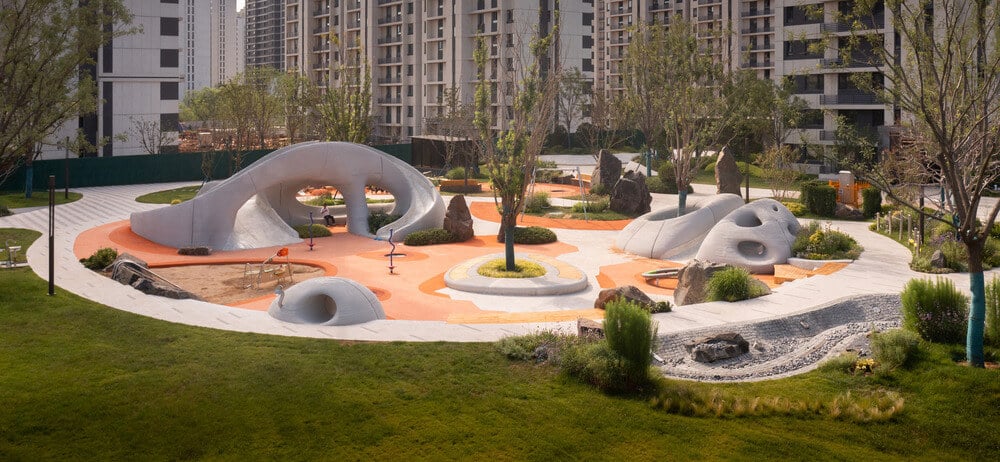
In China, a 3D-Printed Playground Evokes Timeless Geology
XISUI Design harnesses emerging technology to create a series of welcoming organic forms, outfitted with a wide range of play spaces.
